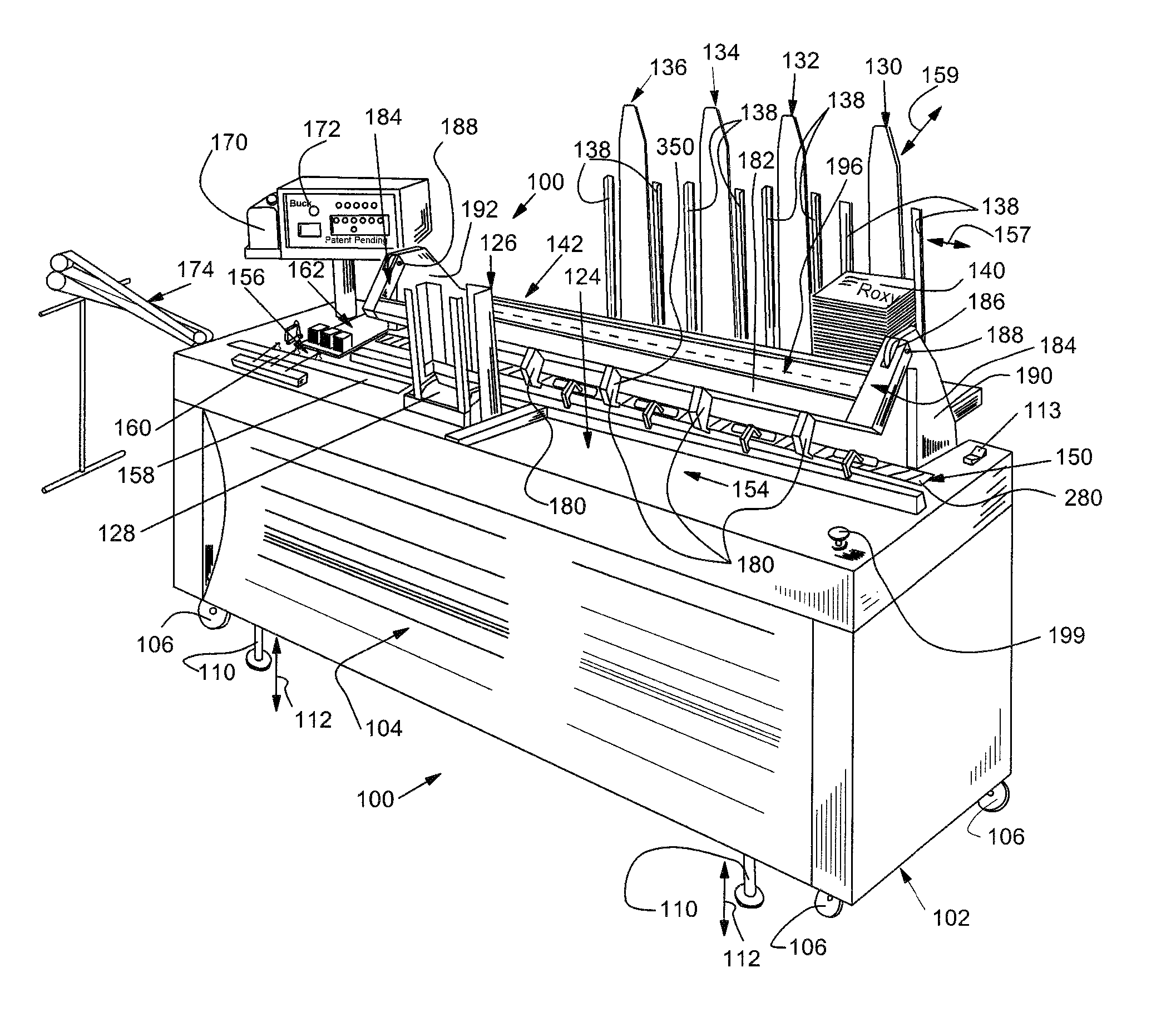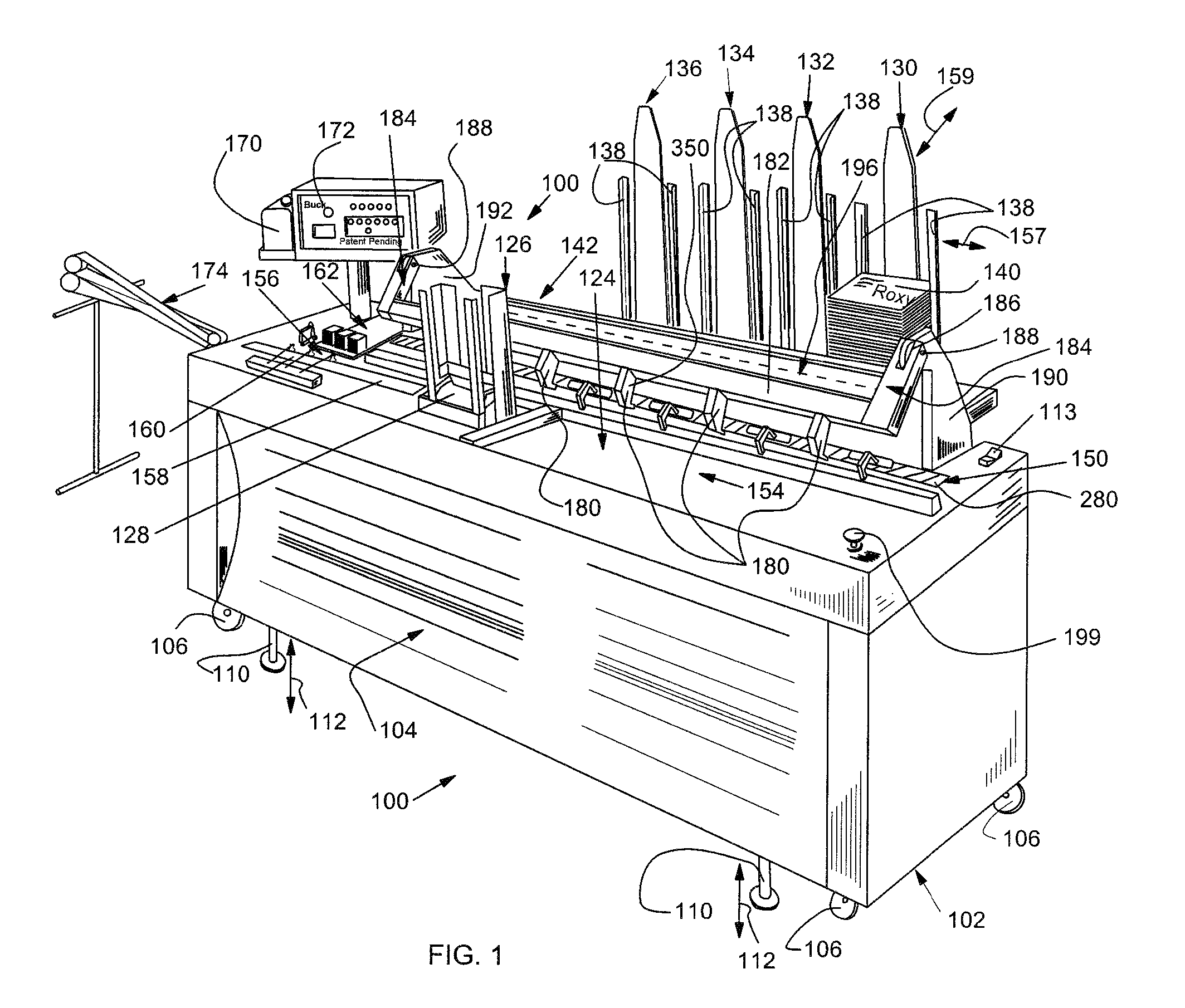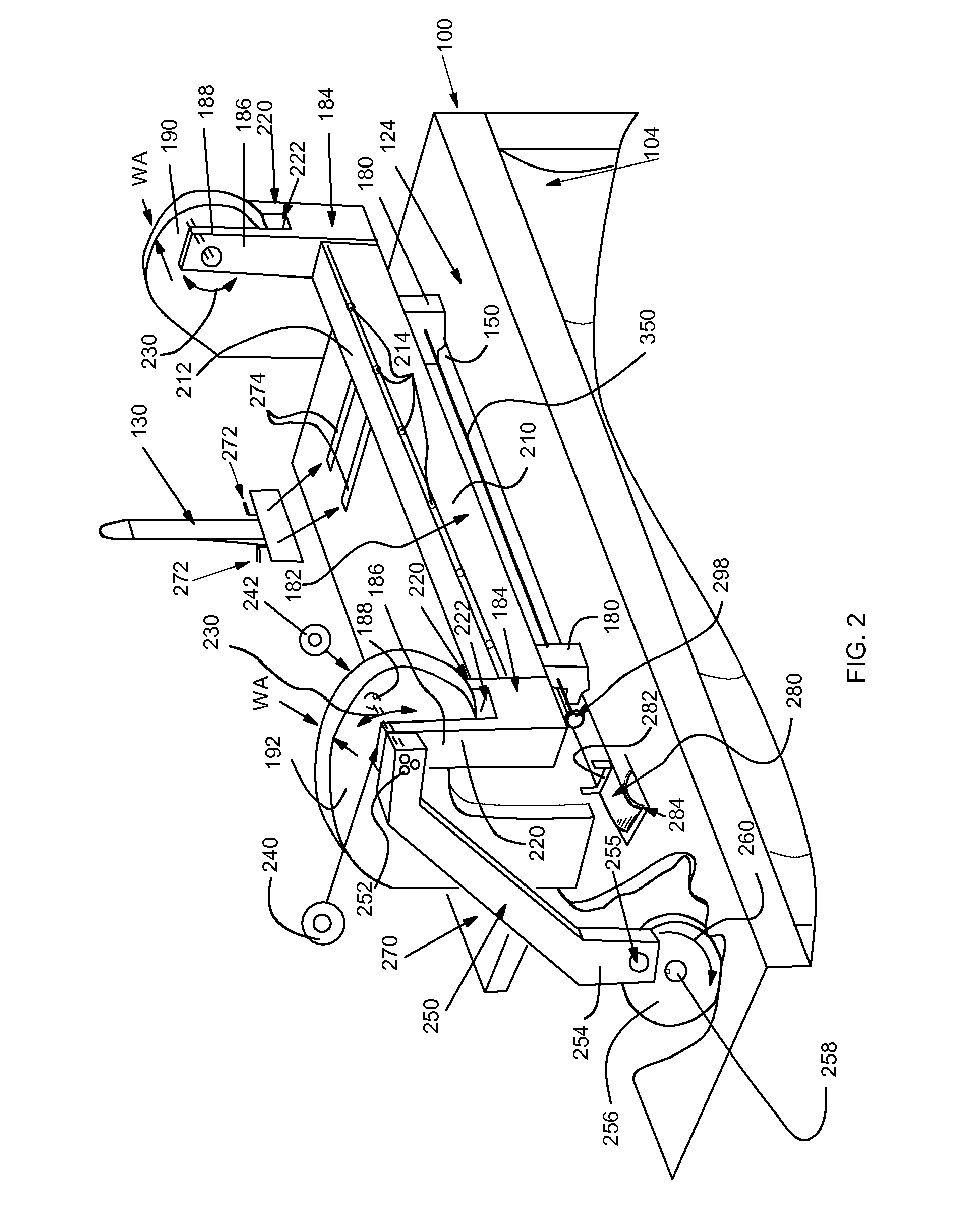System and method for high-speed insertion of envelopes
a high-speed, envelope technology, applied in envelope openers, packaging goods types, transportation and packaging, etc., can solve the problems of large low efficiency of swing-arm inserters, and low efficiency of automatic inserters, so as to reduce the number of operative device components, reduce the number of adjustments needed, and be readily accessible.
- Summary
- Abstract
- Description
- Claims
- Application Information
AI Technical Summary
Benefits of technology
Problems solved by technology
Method used
Image
Examples
Embodiment Construction
[0030]A system for inserting contents into envelopes 100 is shown in FIG. 1. In overview, the system 100 (also termed herein generally as the “inserter” or “device”) includes a main housing 102 having a concave front panel 104 that particularly aids workers in gaining closer access to the device (with room for knees), and also provides a unique, pleasing appearance to the device housing 102.
[0031]The housing 102 is supported on at least four heavy duty caster wheels 106 that provide portability. In general the housing 102 is a relatively lightweight structure consisting of an internal framework (not shown) and removable covering panels that allow access to the device's interior (as an alternative to the flipping-table system described below). The caster wheels 106 are supplemented by at least four (located adjacent each of the four caster wheels) retractable feet 110 that resist sliding, once deployed. The feet move up and down (double arrows 112) based upon a manual or automated dr...
PUM
 Login to View More
Login to View More Abstract
Description
Claims
Application Information
 Login to View More
Login to View More - R&D
- Intellectual Property
- Life Sciences
- Materials
- Tech Scout
- Unparalleled Data Quality
- Higher Quality Content
- 60% Fewer Hallucinations
Browse by: Latest US Patents, China's latest patents, Technical Efficacy Thesaurus, Application Domain, Technology Topic, Popular Technical Reports.
© 2025 PatSnap. All rights reserved.Legal|Privacy policy|Modern Slavery Act Transparency Statement|Sitemap|About US| Contact US: help@patsnap.com



